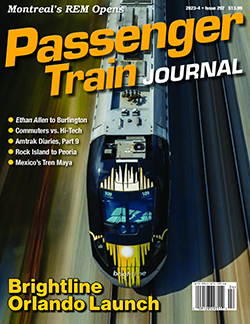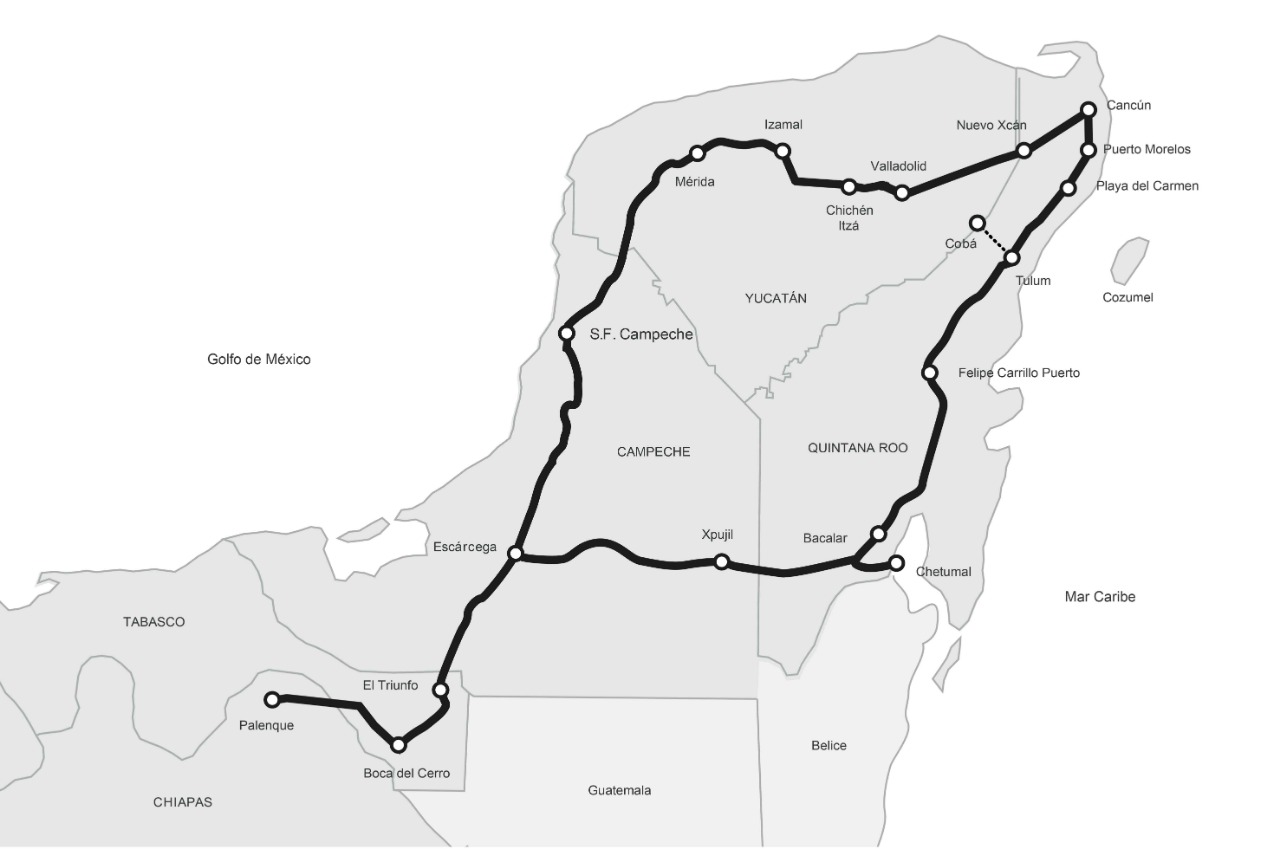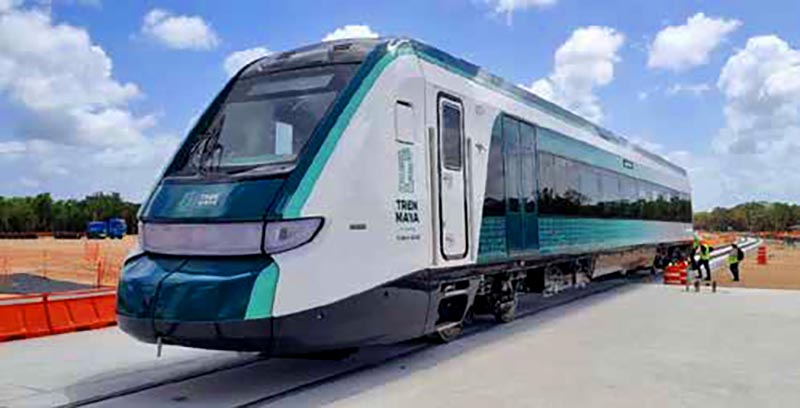 by Kevin McKinney/photos as noted
by Kevin McKinney/photos as noted
While Brightline captures the focus and imagination of rail passenger advocates, and deservedly so, another massive rail project is in development just 528 air miles south of Brightline’s Miami Central station. Known as Tren Maya (Maya Train), this new standard-gauge, 965-mile (1,554-km) railroad in the Yucatan peninsula of southeast Mexico is nearly four times longer than Brightline, yet the project remains little known in the United States and Canada. Tren Maya’s development has been under the direction of the National Fund for Tourism Development (Fonatur), an entity created by Mexico’s Ministry of Finance and coordinated by the Ministry of Tourism. In December 2023 control will shift to Sedena, the National Defense Secretariat.
As with most major infrastructure initiatives, there is opposition and controversy, in this case much of which is valid. The project was announced by Mexico’s President-elect Andres Manuel Lopez Obrador in September 2018, and groundbreaking took place just four months later on December 16. Ongoing opposition by environmentalists, conservationists, and archaeologists led to a referendum in the region on December 15, 2019 — a vote that critics say was engineered by the government to produce a positive result. The referendum was held only one month after it was announced, and during the month prior to the vote publicity about the economic and societal benefits of Tren Maya was said to be overwhelming. With a meager turnout of 2.36 percent of registered voters, 92.3 percent voted in favor. The project hastily moved forward and construction began in earnest in 2020.

President Obrador initially promised “not a single tree” would be cut down. Critics say the real number is now closer to nine million, leaving a scar through parts of the rain forest. Since construction started, 8,000 ancient artifacts have been uncovered. Several limestone caves have been unearthed, part of a fragile system of cenotes (water-filled sinkholes) and subterranean rivers that form part of the largest aquifer in the world. It is feared that Tren Maya and the economic development expected to accompany it will damage this precious resource. Conservationists demanded 12 wildlife corridors to preserve jaguars. Environmentalists complained about deforestation and the lack of environmental permits for the project. In response, Mexico’s Interior Department exempted Tren Maya from environmental review in November 2021, declaring the new rail-road to be a matter of national security.
Indeed, Tren Maya will be owned by the Mexican Armed Forces, and profits from the operation will be funneled to military retirees and pensioners. Mexico’s president favors military control of numerous critical functions, believing better operations and far less corruption will result. Obrador has even resurrected Mexicana Airlines (which would have been 102 this year had it not ceased operations in 2010) as a domestic airline under military control. One role of the new Mexicana will be to fly passengers to Yucatan destinations where they can ride Tren Maya, which will connect beach resorts such as Cancun, Playa del Carmen, and Tulum with 46 Mayan archaeological sites. The state of Quintana Roo is visited by more than 27 million tourists a year, but only 10 percent visit the historic sites that will soon be reached by the new train service…



